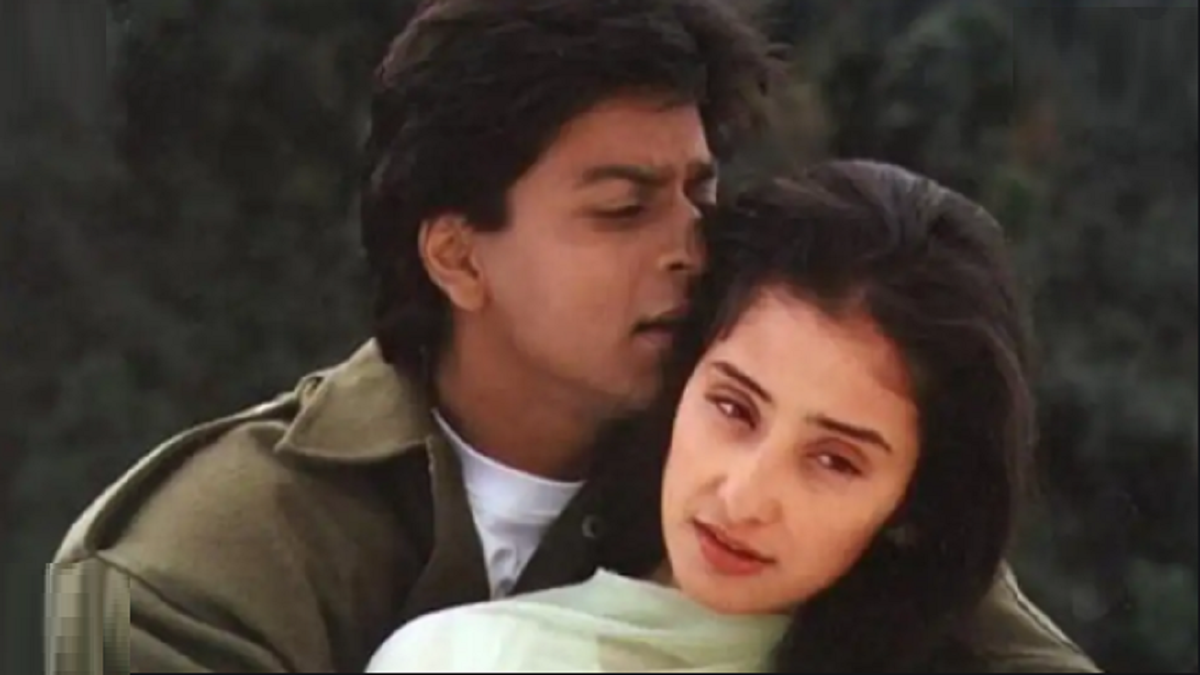


Shah Rukh Khan is often referred to as the “King of Romance”. But if I were to pick my King of Romance, I would go with Mani Ratnam. For, there is something very special about the romantic moments in his films. Even when a film is dealing with more serious subjects like politics, poverty, one-upmanship, communalism, militancy, or nationalism, Mani Ratnam is still able to find endearingly romantic moments along the way. Perhaps, Iruvar is the best example. While it is a political drama of a very serious kind, it has many beautiful moments that celebrate love. Not to mention the songs “Narumugaye”, “Hello Mister Edirkatchi”, “Ayirathil Naan Oruvan”, “Kannai Katti”, and the uber-romantic “Vennelaa”. But, speaking of romance, there isn’t a better Mani Ratnam film than Dil Se, which only recently completed 22 years of its release.
Third in Mani Ratnam’s trilogy of films revolving around lovers caught in the turmoil of politics and terrorism (following Roja and Bombay), Dil Se follows a Delhi-based radio broadcaster (Amar) who gets ensnared by a mysterious girl (Meghna) whom he encounters at a deserted railway station in the middle of a rainy night. What starts off as an infatuation slowly takes the form of intense love as he chases her down from Haflong to Silchar to Ladakh with the hope of marrying her. Alas, their love is doomed! While she knows it right from the very onset, he must learn it the hard way.
Dil Se is a product of creative synergy resulting because of great and diverse talent working at the height of their powers. At the time, Shah Rukh Khan and Manisha Koirala were already at the peak of their acting careers while Mani Ratnam (riding high on the success of Roja and Bombay) had just established his film company in collaboration with Shekhar Kapur and Ram Gopal Varma. Add to this enormous pool of creative talent, a lyricist like Gulzar, composer like A.R. Rahman, singer like Sukhwinder Singh, cinematographer like Santosh Sivan, choreographer like Farah Khan, and a dialogue writer like Tigmanshu Dhulia. Dil Se is essentially an ode to doomed love. Like all great love stories, it is also a tragedy.
It is noteworthy how Mani Ratnam ingeniously weaves the songs into the narrative. Take, for example, the creative usage of the song “E Ajnabi” which gets played on the radio at different junctures in the movie and serves as a leitmotif for the longing felt by Amar and Meghna. It simultaneously fulfills the purpose of bringing the two characters together, again and again: Every time Meghna listens to the song being played on the radio, she feels an irresistible attraction for Amar in spite of herself. On the other hand, the songs “Dil Se Re” and “Satrangi Re” appear to be set in a state of trance. Elleke Boehmer and Stephen Morton offer an explanation in their book Terror and the Postcolonial: “The songs and their exotic locations in the film were very important in masking the impossible reconciliation between the two protagonists by evoking pure fantasy though the phenomenon called the liminal space of dreaming.”
The songs in Dil Se are more like lyrical poetry with delectable references to the flowery verses of Ghalib (“Ishq Par Zor Nahin Hai Yeh Woh Aatish…”) and Iqbal (“Sitaron Se Agay Jahan Aur Bhi Hain…”). But the poetic feel is not merely limited to songs, for the film in itself has an inherent poetic quality. It is the interplay between the elements of drama and poetry that lifts Dil Se beyond the realms of an ordinary tale of love. This is best demonstrated in the scene set in Leh wherein a hysterical Amar encounters Meghna and confronts her for inflicting tremendous emotional and physical pain (for getting him brutally beaten up back in Silchar) on him. Here, Shah Rukh Khan and Manisha Koirala share some very intense scenes seldom seen in Hindi films. Later on, during a delectably poetic scene, Amar declares to Meghna that he both loves and hates her mystical eyes because he is unable to see what’s behind them.
Vintage Mani Ratnam, there is poetic beauty in Amar and Meghna’s romance — almost a sort of divine connect that brings their romance to life. Interestingly, Dil Se follows Amar through the seven stages of love that are defined in ancient Arabic literature viz attraction, infatuation, love, reverence, worship, obsession, and death. Amar’s ever increasing pain and suffering are evident in each and every scene. And while Meghna chooses not to openly reciprocate his feelings, she can’t remain untouched by the purity of his love for very long. The devastating climax offers a perfect closure to their doomed love.
Dil Se certainly deserves more attention than it has received during the last decade and a half. Many Indian critics had described it as a failure at the time of the release, but the fact remains that Dil Se was actually a film well ahead of its time. It is only apt that over the years it has significantly grown in stature and is now widely considered a classic.
Murtaza Ali Khan is a noted film critics and writer. The views expressed are personal.